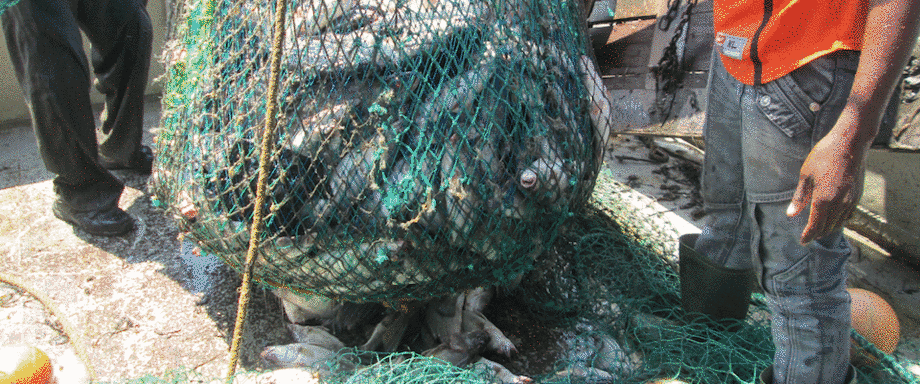The role of EU Laws and Policies in Bycatch Reduction
By Siqi Li
Reducing fish loss and waste (FLW) is a multifaceted endeavor that involves production, transportation, retail, and many other aspects. Among the various factors, bycatch is one of the culprits that lead to FLW. Often consisting of undersized, low value, and less marketable fish, these unwanted catches are typically discarded. According to an assessment by the Food and Agriculture Organization (FAO), the fraction of fishery stocks within biologically sustainable levels decreased to 64.6 percent in 2019, with the underfished stock exhibiting a downward trend. Furthermore, endangered, threatened and protected (ETP) species often die or are harmed upon capture, which casting a shadow on sustainable fishery development.
The key for reducing FLW at the production phase is through better fisheries management. The Common Fisheries Policy (CFP), initially introduced in the 1970s and recently updated by the EU in 2021, represents a comprehensive policy that sets out rules for the conservation and sustainable management of fish stocks in EU waters. A pivotal aspect of the policy involves the establishment of minimum conservation reference sizes for certain fish species. From the implementation standpoint, the CFP employs the most common method, which includes control overfishing activities and the use of fishing gear. In some ways, the policy has worked well. According to a report given by the Scientific, Technical and Economy Committee for Fisheries, from 2003 to 2021, the proportion of fishery stock outside safe biological limits has reduced from 81% to 38%. The number of overfished stocks also follows a decreasing trend.
EU laws and policies have helped to reduce the number of bycatch by contributing to technological upgrades within the fishing industry. The European Maritime Fisheries and Aquaculture Fund, for instance, aimed to help fishers transitioning to sustainable fishing between 2014 and 2021. More than a thousand operations were carried out to support innovation and new technologies. For ETP species, special fishing gear has been developed, specifically designed to increase fishery production while avoiding most bycatch. Supported by the EU strategy, the depth and breadth of blockchain technology applications in various fields continues to expand. In the fishery industry, the application of blockchain technology is continuously improving the transparency of the fish value chain, increasing product value and promoting industry development through sustainable certification. Bycatch, as one of the important issues in fishing activities, is at the outset of the fish value chain. The improvement of transparency is also more conducive to strengthening government supervision and facilitating corporate compliance.
Non-government organizations (NGOs) also play a pivotal role in bycatch reduction. The growth and effectiveness of these NGOs owe much to the support they receive from EU laws and policies. In the realm FLW reduction, numerous NGOs have conducted extensive fieldwork and produced detailed studies of their respective national fisheries, many of which have been funded by EU research grants. Industry standards set by industry associations and EU laws and policies can complement each other to a certain extent, striking a balance between environmental protection and economic development while improving the enforcement of relevant regulations. NGOs also play an important role in the protection of ETP species. While the EU relies more on the legislation and implementation, NGOs can mobilize volunteers to raise public awareness of wildlife protection through educational initiatives. They also disseminate knowledge about ETP species conservation, work with government and other organizations to monitor and study the number and distribution of ETP species, assist authorities in policy formulation and provide more assistance in project implementation.
EU policies in fisheries and aquaculture are committed to making the activities environmentally sustainable, consistent with the objectives of achieving economic, social and employment benefits, and of contributing to the availability of food supplies. The CFP serves as both the overarching framework for European fisheries regulations and the enforceable fisheries code. Under the guidance of the relevant fisheries legislation and policies, regional fisheries management issues have been addressed in an integrated approach and the coherence of national policy is enhanced. Collectively, these concerted efforts are driving the EU fisheries industry towards more sustainable development.

